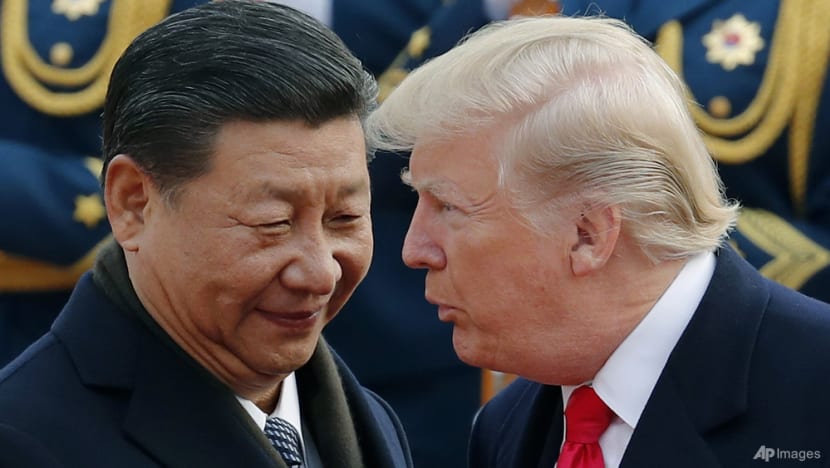SINGAPORE: A couple of days after United States President Donald Trump was sworn in for a second term last month, he appeared to strike a conciliatory tone on China, telling global leaders at the World Economic Forum that he looked forward to “getting along” with Beijing.
The unexpected positive tone - especially after his campaign threats to impose tariffs as high as 60 per cent on China - led some experts on both sides of the Pacific to forecast a grand bargain coming between the United State and China.
On Saturday (Feb 1), the Trump administration ordered a 10 per cent tariff hike on goods from China, along with 25 per cent levies on Canadian and Mexican imports.
After days of urging Washington to “manage differences” and "meet China halfway", Beijing hit back on Feb 4, announcing 15 per cent tariffs on US coal and Liquefied Natural Gas (LNG), and 10 per cent duties on crude oil, farm equipment, large-displacement vehicles and pickup trucks, in addition to a targeted investigation of Google. These tariffs, among other measures, are to take effect on Feb 10.
Even if these tariffs get paused, as did the ones between the US with Canada and Mexico, that will not be indicative of an easing of this trade war.
For the US, the origin of this trade war traces back to China not living up to its World Trade Organization (WTO) commitments after joining in 2001, and certainly at least 10 years ago when Beijing rolled out its Made in China 2025 blueprint, an ambitious industrial policy aimed at dominating key sectors of the 21st century achieved through state subsidies and an uneven playing field for foreign businesses.
Add on the forced technology transfers, cyber theft and China’s failure to live up to its trade commitments, and the US finds ample justification for the tariffs implemented by both the Trump and Biden administrations, and the new ones in Trump 2.0.
From Washington’s perspective, China isn’t looking to avoid a trade war - it simply wants to escape retaliation for the one it started.
There are a few days before China’s retaliatory tariffs are set to kick in, and reports suggest China is preparing an initial proposal for trade negotiations. According to the Wall Street Journal, the proposal involves reviving the “Phase 1” deal that Mr Trump signed with Chinese President Xi Jinping in 2020. The two leaders are scheduled to have a call this week.
However, for a true resolution to occur from Washington's perspective, China must go past just buying more stuff from the US and move off its current path. Sure, China doesn’t want tariffs from the US, but it’s hard to see any substantive behaviour China will change to keep the US from its course of retaliation beyond tariffs, such as investment restrictions and export restrictions targeting China's ability to make advanced semiconductors.
